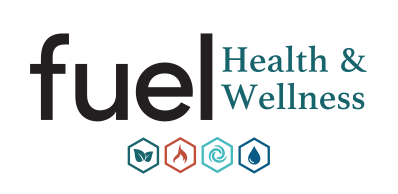Red light therapy, also known as low-level light therapy or photobiomodulation, is a non-invasive treatment that uses red and near-infrared light to stimulate cellular function in the body. In recent years, red light therapy has gained popularity as a natural and effective way to treat a wide range of health issues, from weight loss to chronic pain and inflammation to skin conditions and mental health concerns. In this blog post, we’ll explore the basics of red light therapy, including how it works and the potential benefits it offers.
How Does Red Light Therapy Work?
Red light therapy works by using wavelengths of red and near-infrared light to penetrate the skin and stimulate the production of ATP, which is a molecule that provides energy for our cells. When red and near-infrared light waves penetrate the skin, they stimulate the mitochondria of the cell, the powerhouses of our cells, which then stimulates the production of ATP. This increase in ATP production can lead to a range of systemic health benefits, including reduced inflammation, improved circulation, and enhanced cellular function.
There are different types of red light therapy devices available on the market, from handheld devices to full-body panels. Some devices emit only red light, while others emit a combination of red and near-infrared light. The effectiveness of red light therapy depends on the intensity and wavelength of the light used, as well as the duration and frequency of treatments.
Potential Benefits of Red Light Therapy
Red light therapy has been studied extensively for its potential health benefits, and research has shown that it may be effective in treating a wide range of health issues. Here are some of the potential benefits of red light therapy:
- Pain relief: Red light therapy has been shown to reduce pain and inflammation by stimulating the production of endorphins and reducing oxidative stress (1).
- Improved skin health: Red light therapy can improve the appearance of the skin by increasing collagen production, reducing inflammation, and promoting blood flow (2).
- Faster muscle recovery: Red light therapy can help improve muscle recovery and reduce soreness, making it a popular choice for athletes and fitness enthusiasts (3).
- Improved mental health: Red light therapy has been shown to improve mood and reduce symptoms of depression and anxiety by stimulating the production of serotonin and dopamine (4).
It’s important to note that while red light therapy has shown promise as a natural and effective treatment option, more research is needed to fully understand its potential benefits and risks. It’s also important to consult with a healthcare professional before using red light therapy, particularly if you have any underlying health conditions or are taking medication.
Resources and Citations
- Hamblin MR. Mechanisms and applications of the anti-inflammatory effects of photobiomodulation. AIMS Biophys. 2017;4(3):337-361. doi:10.3934/biophy.2017.3.337
- Avci P, Gupta A, Sadasivam M, et al. Low-level laser (light) therapy (LLLT) in skin: stimulating, healing, restoring. Semin Cutan Med Surg. 2013;32(1):41-52. doi:10.12788/j.sder.2013.009
- Leal-Junior EC, Vanin AA, Miranda EF, de Carvalho PD, Dal Corso S. Effect of phototherapy (low-level laser therapy and light-emitting diode therapy) on exercise performance and markers of exercise recovery: a systematic review with meta-analysis. Lasers Med Sci. 2015;30(2):925-939. doi:10.1007/s10103-014-1679-3
- Naeser MA, Zafonte R, Krengel MH, et al. Significant improvements in cognitive performance post-transcranial,

